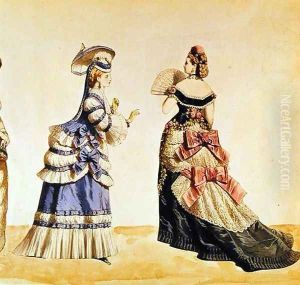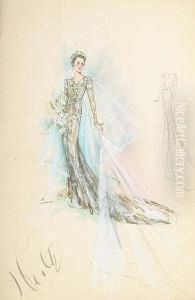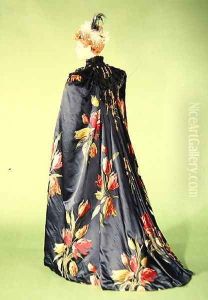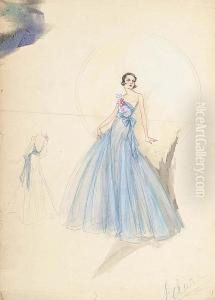Charles Frederick Worth Paintings
Charles Frederick Worth, often known as the 'Father of Haute Couture,' was a pioneering English fashion designer whose impact on the world of fashion and the institution of the Parisian couture industry was profound. Born on October 13, 1825, in Bourne, Lincolnshire, England, Worth made his way to Paris in 1845, after an apprenticeship and some work experience in London textile merchants and drapers.
In Paris, Worth began working for Gagelin, a prominent silk mercantile firm, where he first started making dresses for the firm’s clients. His designs quickly gained popularity, and with the support of Otto Gustaf Bobergh, his employer at Gagelin, he opened his own fashion house, the 'House of Worth,' in 1858. This establishment became the first haute couture house in history, a concept that completely revolutionized the fashion industry.
Worth was an innovator not just in fashion design but also in the business of fashion. He was the first to use live models to showcase his designs, thereby inventing the modern fashion show. He also transformed the role of the dressmaker into that of a fashion designer, personally selecting the fabrics, setting the prices, and dictating the styles that would suit his high-society clientele. Worth's designs were known for their opulence, intricate embroidery, and lavish fabrics. He was particularly influential in the crinoline and bustle periods of women's fashion.
His clientele included European aristocracy and royalty, and he is famously associated with Empress Eugénie of France, for whom he designed extensively. Worth's designs were characterized by their exquisite craftsmanship and attention to detail, and he often drew inspiration from historical costumes.
Charles Frederick Worth passed away on March 10, 1895, but his legacy endures. His sons, Gaston and Jean-Philippe, took over the business after his death, continuing the tradition their father had established. Worth's contributions to the fashion industry paved the way for the modern concept of the fashion designer as an artist and the fashion house as an arbiter of style. Today, the House of Worth is remembered not just for its designs but also for its seminal role in the development of the fashion industry as we know it.



